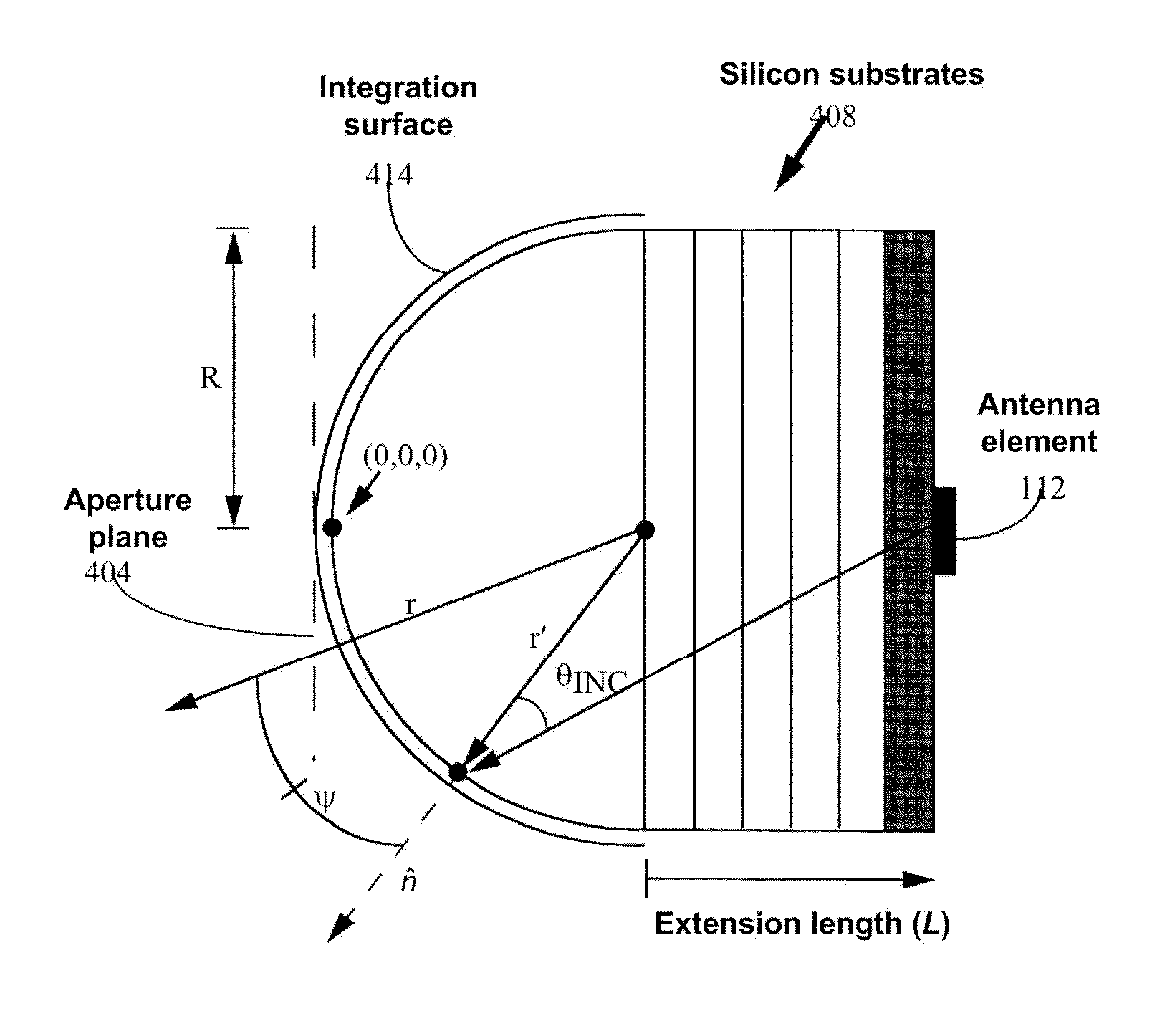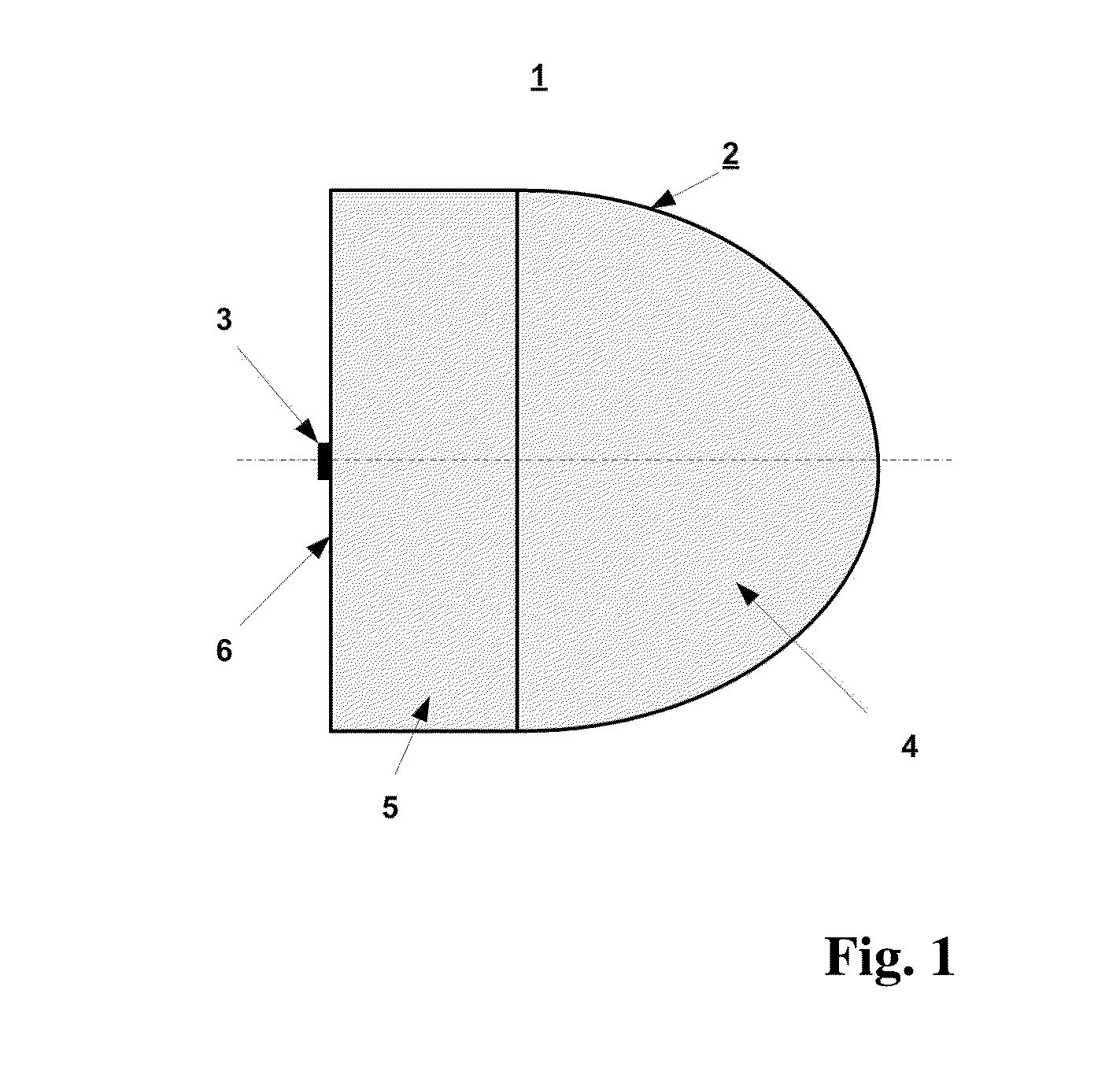Lens antenna
a lens antenna and antenna technology, applied in the direction of antennas, differentially interacting antenna combinations, electrical devices, etc., can solve the problems of difficult manufacturing, high cost, and difficulty in transmitting a signal over long distances using antennas with insufficient gain values
- Summary
- Abstract
- Description
- Claims
- Application Information
AI Technical Summary
Benefits of technology
Problems solved by technology
Method used
Image
Examples
Embodiment Construction
[0048]According to the invention, it is provided an increased gain value in lens antennas having large diameters (over 10×-20× wavelength in free space, which is required for use in radio-relay millimeter wave point-to-point communications). An example of a lens antenna 200 according to one of the embodiments is shown in FIG. 3. The antenna 200 comprises a lens 10 and an antenna element 20, which is a primary antenna element. The lens 10 consists of a collimating part 11 and an extension part 12. The part 11 is integrally formed with the part 12, and the parts 11 and 12 of the lens 10 are made of a dielectric material. The antenna element 20 is formed by a hollow waveguide 21 with a transition segment 23 between the input aperture and the radiating opening facing the lens, said radiating opening having width Wae and comprising a dielectric insert 22. The part 12 of the lens 10 comprises a substantially flat surface 13, and the antenna element 20 is rigidly fixed on the surface 13 by...
PUM
 Login to View More
Login to View More Abstract
Description
Claims
Application Information
 Login to View More
Login to View More - R&D
- Intellectual Property
- Life Sciences
- Materials
- Tech Scout
- Unparalleled Data Quality
- Higher Quality Content
- 60% Fewer Hallucinations
Browse by: Latest US Patents, China's latest patents, Technical Efficacy Thesaurus, Application Domain, Technology Topic, Popular Technical Reports.
© 2025 PatSnap. All rights reserved.Legal|Privacy policy|Modern Slavery Act Transparency Statement|Sitemap|About US| Contact US: help@patsnap.com



